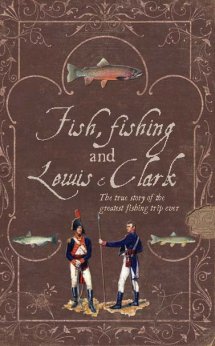|
 On August 31, 1803 Meriwether Lewis and William Clark set off on the water from Pittsburgh taking the Ohio River downstream They had been instructed by President Jefferson to find passage through to the west coast and to fulfill a mission to explore the United States. They traveled through territory that had never been mapped and through landscapes where plants and animals had never been recorded. To survive, the Expedition had to hunt and fish. Their adventure was not just about survival, they also fished for fun. Staying on major rivers, the Expedition traveled more than 3,700 river miles from the junction of the Missouri and Mississippi rivers to the mouth of the Columbia River where it reaches the Pacific Ocean. By the end of their trip, they discovered 178 different plants and 122 animals that had never been described before. This total included 14 different fish species. On August 31, 1803 Meriwether Lewis and William Clark set off on the water from Pittsburgh taking the Ohio River downstream They had been instructed by President Jefferson to find passage through to the west coast and to fulfill a mission to explore the United States. They traveled through territory that had never been mapped and through landscapes where plants and animals had never been recorded. To survive, the Expedition had to hunt and fish. Their adventure was not just about survival, they also fished for fun. Staying on major rivers, the Expedition traveled more than 3,700 river miles from the junction of the Missouri and Mississippi rivers to the mouth of the Columbia River where it reaches the Pacific Ocean. By the end of their trip, they discovered 178 different plants and 122 animals that had never been described before. This total included 14 different fish species.
Fly Fishers International has created a resource for use with middle school age students. A 24-page student booklet describes the true story of the greatest fishing story ever - the story of Lewis and Clark told through fishing. A companion booklet is provided for instructors, educators and teachers to help guide the use of the student booklet.
The booklet was inspired by "Undaunted Anglers: Fishing with Lewis and Clark" exhibit that was part of the FFI Fly Fishing Discovery Center. Funding was provided for by Lewis and Clark National Historic Trail, Montana Fish Wildlife & Parks, Montana Chapter of American Fisheries Society. Schools interested in the booklet may contact the FFI HQ at 406-222-9369.
Undaunted Anglers – Fishing with Lewis and Clark was originally created as a physical exhibit by the Fly Fishers International and housed at the Fly Fishing Discovery Center in Livingston, Montana. The exhibit was researched and created by Seonaid Campbell and was open to the public from 2004 to 2009. The physical exhibit is now on display at the Missouri River Basin Lewis and Clark Interpretive Trail and Visitors Center in Nebraska City, Nebraska. The center focuses on the scientific discoveries of Lewis and Clark and is a perfect resting home for this exhibit. Visit the Missouri River Basin Lewis and Clark Center.
Fly Fishers International's online exhibit is now open.
Please visit www.undauntedanglers.org.
|